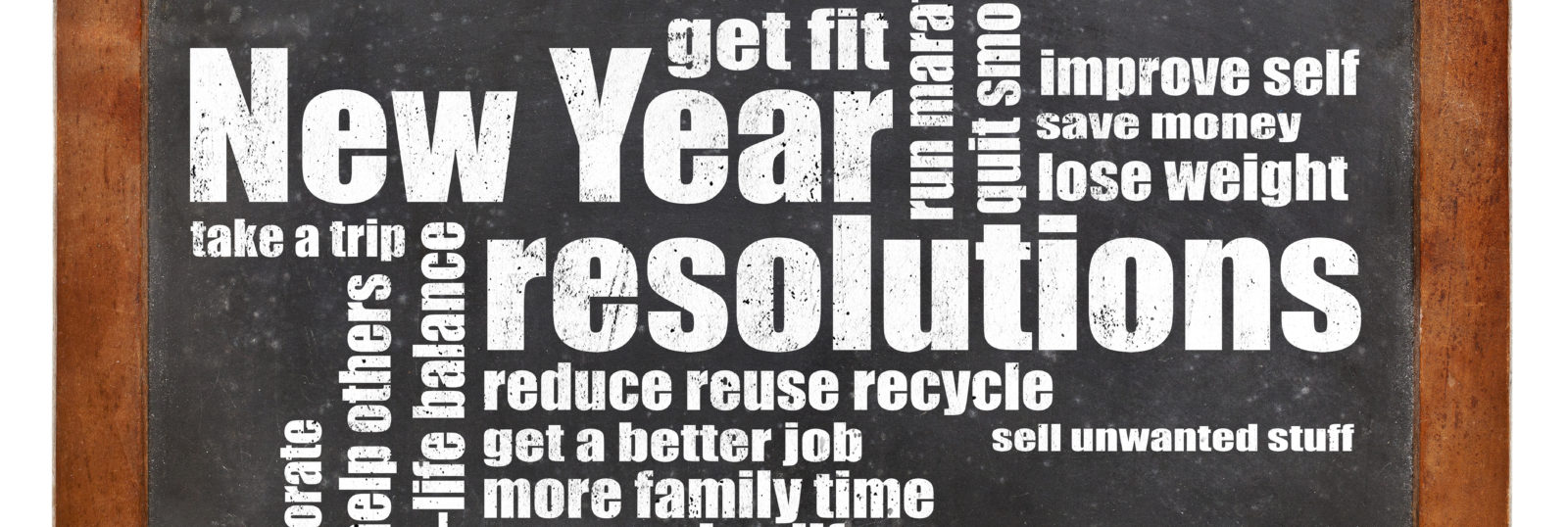New Year’s resolutions: simple to make, easy to break. According to a 2007 British survey of over 3,000 people, 88 percent of all resolutions end in failure. Part of the reason for this dismal success rate is that most New Year’s resolutions require behavior change, something that we don’t typically embrace. Furthermore, bad habits are hard to break—even impossible if we try to break them all at once.
If you’re going to make New Year’s resolutions this year, here are some tips to help you achieve them:
- Focus on one resolution, rather than several.
- Set a SMART resolution, one that is Specific, Measurable, Attainable, Realistic, and Time-based.
- Take small steps; break your overarching goal down into several small steps.
- Be accountable.
- Celebrate your success between each achieved step/milestone; don’t wait for the big goal to be completed.
- Focus on the present. What’s one thing you can do today, right now that will help you towards your goal?
Like millions of people, one of your resolutions is likely to lose weight. Focus on that—and not the myriad other “shoulds” weighing on you—in a realistic, achievable, practicable manner.
Define a healthy weight-loss time frame. Forget about achieving those six-pack abs you’ve always dreamt about. Even a loss of 5-7 percent of body weight can improve health and quality of life, and reduce your risk of health problems like type-2 diabetes. So, if you weigh 200 pounds, your goal should be to lose 10-14 pounds, based on the safe rate of roughly 1 pound per week.
Plan how you can actually achieve the weight-loss. The strategy is to consume 500 fewer calories a day than you normally would. The best way to track this is with a food journal, made easier with smart phones and apps, such as Nutritionix or MyFitness Pal. Food journaling may seem like a chore at first, but it will soon become a habit and will help sustain your weight-loss for longer. Set a milestone of food journaling every day for two weeks.
Be realistic about what dietary changes you are willing to make. Before you vow to follow an all-kale diet, consider some easier substitutions. A 12-oz can of soda or beer will save you 150 calories while a 5-oz glass of wine will save 125 calories. Consider switching from a latte (180 calories) to house coffee with half and half (2 tablespoons = 80 calories). Choosing oatmeal instead of a baked treat for breakfast can save anywhere from 250-450 calories. Ordering the BBQ Chicken Crispani at Panera instead of the Sierra Turkey Sandwich can save you 460 calories. All of these small, smart choices can add up to 500+ calories per day without significantly changing your diet. Check out more healthy food swaps for healthy weight-loss.
Find someone who will support you in your new endeavor and to whom you feel comfortable reporting your successes and troubles. Having to be accountable for our actions forces us to be more committed. Consider a friend, spouse, or partner, or, alternately, working with dietitian or joining your local Weight Watchers group.
Remember to celebrate each accomplished step with a non-food reward such as going to the movies, getting a massage, or a new piece of clothing.
Lastly, find moments in your everyday activities that will help you toward your goal. Throw out leftover holiday cookies and candies. Park the car farther away from the entrance. Take the stairs instead of the elevator. Fit in a lunch-time walk. These small, every day choices can lead to big rewards!

